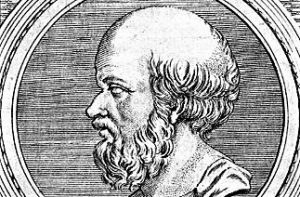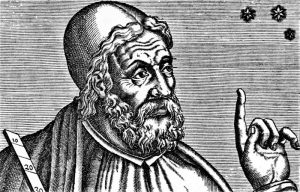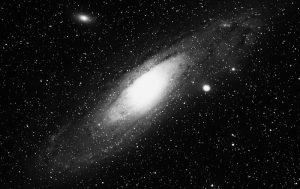Eratosthenes
Eratosthenes is considered to be the first scientist in world history who managed to measure with excellent precision the circumference of our earth at a time when people thought that the world instead of being round was flat.

Personal information
- Born: 276 B.C.
- Birthplace: Cyrene, Libya
- When he died: 194 B.C.
- Where he died: Alexandria, Egypt
Who was Eratosthenes?
Eratosthenes was an important Greek mathematician and astronomer, who for many decades was director of the Alexandria library and was recognized as one of the most important minds of his time.
Biography of Eratosthenes
Cyrene Eratosthenes was born in 276 B.C. in Cyrene, North Africa, and died in 194 B.C. in Alexandria, Egypt. He was a disciple of the Greek poet Callimachus of Cyrene, and the grammarian Lysanias, director of the Library of Alexandria and friend of Archimedes. His enemies called him the “Beta“, because according to what they thought, he was the second best in everything. Those who knew and appreciated him, however, called him the “Alpha,” because they knew he was first in almost everything.
Eratosthenes ended his days dying of voluntary starvation at the age of 80, because he was extremely depressed because he had lost his sight.
Contributions and inventions
One of the main contributions of Eratosthenes to science and astronomy was his important work regarding the measurement of the earth. Eratosthenes, studying the papyri of the Alexandria library, found a report in which it was said that when the sun’s rays fall on a rod during the midday of the summer solstice no shade was produced.
He correctly assumed that, if the Sun was located at a great distance, when its rays reached the earth, they should reach it in parallel, supposing that the earth was flat as it was considered at that time and therefore, there should be differences between the shadows projected by objects at the same time of the same day, regardless of the place. However, by proving that this did happen, he deduced that the earth was not flat and using the known distance between the two cities and the measured angle of the shadows, he calculated the circumference of the earth in approximately 250 stadiums, about 40,000 kilometers, an estimate that was almost close to reality.
Other of his contributions was that he was able to calculate the distance to the Sun in 804. 000. 000 stadiums and the distance to the Moon in 780. 000 stadiums. He was able to measure the inclination of the ecliptic quite well and with great precision at 23º 51′ 15″.
Another of his important astronomical works was a catalogue of about 675 stars. He also created one of the most advanced calendars for his time and a chronological history of the world since the beginning of the Trojan War.
He researched geography by drawing maps of the known world, large stretches of the Nile River and described the region of Eudaemony, which we now know as Yemen in Arabia. He also invented the Eratosthenes sieve.
Eratosthenes screen
Screening is a method that allows us to find all prime numbers smaller than a given natural “N” number. This algorithm could be summarized as follows:
- You should start with the number 2, highlight the number 2 as prime, but cross out all multiples of 2 (i.e. cross out 4, 6, 8, etc.).
- Then we continue with the next number that is not crossed out in the table, the number 3, we highlight the number 3 as prime and we cross out all multiples of 3 (i.e. we crossed out 6, 9, 12, etc.).
- The next number that is not crossed out in the table is the number 5, so we must highlight it as prime and cross out all multiples of 5 (i.e. we crossed out 10, 15, 20, etc.).
- This process must be repeated until we reach the number N, having previously crossed out all the multiples of the prime numbers found.
Measurement of the earth
In order to take measurements of the earth, he invented and used a trigonometric method, different notions of latitude and longitude that had already been introduced in the area of science, apparently by Dicearco, so he deserves the title of father of geodesy.
Importance
His importance in the modern world is not only based on the fact that he made important progress in geometry; he was responsible for the “Eratosthenes sieve“, a system for determining prime numbers. He was one of the most important geographers and mapped the Nile River to Khartoum, in which he showed its two Ethiopian tributaries, and gave the first satisfactory explanation as to why the Nile River was flooded. In addition, he elaborated a calendar with leap years, elaborated a small stellar catalogue, was a poet and wrote treatises on Ethics.
Eratosthenes works
Among his most important works we can mention the following:
- Works by Erygone: was the best known and was an astronomical and geographical poem that deals with the Earth’s shape, its temperature, different climates and constellations.
- Treatises on moral philosophy and other philosophical works. All his works were closely linked to mathematics.
- Chronography: in this work, he manages to compile the dates of the most important literary and political events to date; it is believed that the Olympics, cited by Diogenes Laertius and Athenaeum, were part of the Chronography.
- Treatise on the ancient comedy attica: of it are fragments Arjitectonic and Skenographic in which he spoke of the decoration, the wardrobe, the declamation and the plot of works by Aristophanes and Cratino among others.
- He studied Homer’s work and wrote a biography of the poet’s life that has not reached our days.
Phrases
There are no recognized Eratosthenes phrases, but there are two phrases written by Carl Sagan that reflect his essence:
- “Eratosthenes had no tools other than sticks, eyes, feet and head and a great desire to experiment with these tools correctly deduced the circumference of the earth with enormous precision and a minimum percentage of error”.
- “Eratosthenes criticized Aristotle for his blind chauvinism, believing that in all countries, there were good and bad things”.
How to cite this article?
Briceño V., Gabriela. (2019). Eratosthenes. Recovered on 23 February, 2024, de Euston96: https://www.euston96.com/en/eratosthenes/









